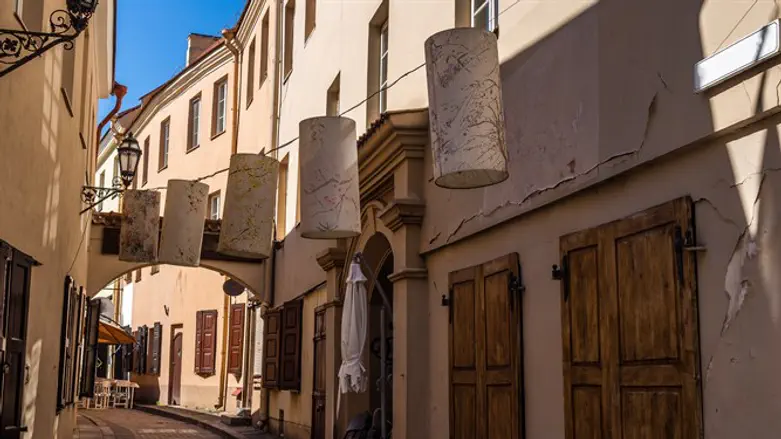
Jewish community leaders in Lithuania on Thursday announced the discovery of an 18th-century memorial plaque bearing Hebrew inscriptions that detail trips made by Jewish residents of Vilnius to
the Holy Land at the time.
The stone plaque was discovered in a cellar below the most revered part of the Great Synagogue of Vilnius, Lithuania's major Jewish house of prayer before it was destroyed by Nazi and Soviet regimes.
"In 1776 we went up with joy to our country (Eretz Israel)," reads part of the inscription.
It uses the Hebrew word "aliyah," referring to the immigration of Jews from the Diaspora to the Land of Israel.
"It was a great surprise," Faina Kukliansky, the leader of Lithuania's Jewish community, told AFP of the discovery.
"Archaeologists burst into tears when they spoke about these archaeological discoveries," she added. "They are of global significance."
The Vilnius synagogue, dating from the 1630s, was the most important synagogue for Lithuania's once-vibrant Jewish community.
Last year, archaeologists announced they had discovered the synagogue's bimah, the podium or platform in a synagogue from which the Torah is read.
The plaque unveiled on Thursday was discovered later in a cellar beneath the bimah.
Prior to the Holocaust, Vilnius attracted Yiddish-speaking writers and scholars, earning it the title of "Jerusalem of the North."
Before the war, the 60,000-strong Jewish community accounted for around one-third of the city's residents, but most of them perished under Nazi Germany's 1941-1944 occupation.
The Nazis burned down the synagogue and the remains were later demolished by the Soviet regime that built a kindergarten, later turned into the primary school, on the property.
Lithuania's tiny Jewish community now numbers around 3,000 people out of a total population of 2.9 million.